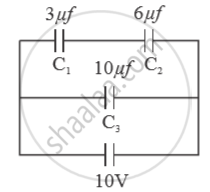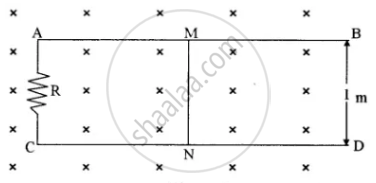Advertisements
Advertisements
What is meant by the statement: "Relative permittivity of water is 81"?
Concept: Coulomb’s Law - Force Between Two Point Charges
Can a body be given a charge of 2.2 × 10-19 C? Give a reason for your answer.
Concept: Quantisation of Charge
Arrangement of an oxygen ion and two hydrogen ions in a water molecule is shown in figure below.
Calculate electric dipole moment of water molecule. Express your answer in terms of e (charge on hydrogen ion), l and θ.

Concept: Electric Dipole
“A uniformly charged conducting spherical shell for the points outside the shell behaves as if the entire charge of the shell is concentrated at its centre”. Show this with the help of a proper diagram and verify this statement.
Concept: Uniformly Charged Infinite Plane Sheet and Uniformly Charged Thin Spherical Shell (Field Inside and Outside)
Obtain an expression for an intensity of electric field at a point at the end of position, i.e., the axial position of an electric dipole.
x
Concept: Electrical Potential Energy of a System of Two Point Charges and of Electric Dipole in an Electrostatic Field
Deduce an expression for equivalent capacitance C when three capacitors C1, C2 and C3 connected in parallel.
Concept: Combination of Capacitors
Two point charges of 10C each are kept at a distance of 3m in the vacuum. Calculate their electrostatic potential energy.
Concept: Electrical Potential Energy of a System of Two Point Charges and of Electric Dipole in an Electrostatic Field
Four capacitors, C1, C2, C3 andC4 are connected as shown in Figure 3 below. Calculate equivalent capacitance of the circuit between points X . and Y.

Concept: Capacitance of a Parallel Plate Capacitor with and Without Dielectric Medium Between the Plates
Figure 4 below shows a capacitor C, an inductor L and a resistor R, connected in series
to an a.c. supply of 220 V

Calculate:
1) The resonant frequency of the given CLR circuit.
2) Current flowing through·the circuit.
3) Average power consumed by the circuit.
Concept: Combination of Capacitors
Define equipotential surface.
Concept: Equipotential Surfaces
Obtain an expression for electric potential ‘V’ at a point in an end-on position i.e. axial position of the electric dipole.
Concept: Electric Potential
Three capacitors of capacitance `C_1 = 3muf` , `C_2 = 6muf` , `C_3 = 10muf` , are connected to a 10V battery as shown in figure 3 below :

Calculate :
(a) Equivalent capacitance.
(b) Electrostatic potential energy stored in the system
Concept: Combination of Capacitors
The electrostatic potential energy of two-point charges, 1 µC each, placed 1 meter apart in the air is:
Concept: Electrical Potential Energy of a System of Two Point Charges and of Electric Dipole in an Electrostatic Field
A wire of resistance 'R' is cut into 'n' equal parts. These parts are then connected in parallel with each other. The equivalent resistance of the combination is :
Concept: Combination of Capacitors
Show that electric potential at a point P, at a distance 'r' from a fixed point charge Q, is given by:
`v=(1/(4pi∈_0))Q/r`.
Concept: Potential Due to a Point Charge
Three capacitors C1 = 3μF, C2 = 6μF, and C3 = 10μF are connected to a 50 V battery as shown in Figure below:

Calculate:
(i) The equivalent capacitance of the circuit between points A and B.
(ii) The charge on C1.
Concept: Capacitors and Capacitance
A parallel plate air capacitor has a capacitance of 5 μF. It becomes 50 μF when a dielectric medium occupies the entire space between its two plates. What is the dielectric constant of the medium?
Concept: Capacitance of a Parallel Plate Capacitor with and Without Dielectric Medium Between the Plates
AB and CD are two parallel conductors kept 1 m apart and connected by a resistance R of 6 Ω as shown in Figure below. They are placed in a magnetic field B = 3 × 10-2 T which is perpendicular to the plane of the conductors and directed into the paper. A Wire. MN is placed over AB and CD. and then made to slide with a velocity 2 ms-1 (Neglect the resistance of AB, CD, and MN.)

Calculate the induced c.urrent flowing through the resistor R.
Concept: Conductors and Insulators Related to Electric Field
You are provided with 8 μF capacitors. Show with the help of a diagram how you will arrange minimum number of them to get a resultant capacitance of 20 μF.
Concept: Capacitors and Capacitance
What is meant by an equipotential surface?
Concept: Equipotential Surfaces
